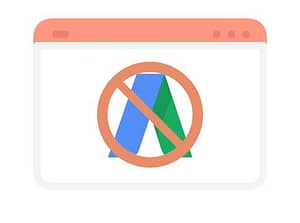In today’s hyper-connected world, the Internet reigns supreme in every sense of the word. According to EarthWeb, 5.07 billion people use the Internet daily – a number that is only poised to increase. And to keep up with this ever-growing audience, companies are leveraging digital marketing strategies to establish their brand presence, reach wider audiences, and drive business growth. But what is digital marketing, after all?
In short, digital marketing encompasses a range of tactics aimed at enhancing a company’s reputation and visibility online. It is the natural progression of physical propaganda if you will.
To understand the whole concept, this article will delve into what is digital marketing, exploring its core concepts, the pillars that support its framework, and how aspiring marketers can step into this dynamic field.
So let’s get started!
What is Digital Marketing?
Digital marketing refers to the collective set of strategies and techniques that companies employ to promote their products, services, or brands using various online channels. Unlike traditional marketing, which often relies on print media, billboards, and television advertisements, digital marketing harnesses the power of the Internet to target and engage potential customers.

In a world where everyone has their eyes glued on a screen, the best place to connect with audiences is where they spend a significant amount of their time – online. Ever since the commercial inception of the Internet in 1991, this has been a reality we can’t escape, and any company that doesn’t adapt to the new business style is going to be left behind.
The 10 Pillars of Digital Marketing
From a broad perspective, digital marketing embraces a plethora of different branches in the infinitude that is nowadays Internet. However, we can narrow down the concept of digital marketing to 10 specific areas – which serve as the pivotal pillars of this big spectrum. Think of them as ingredients for baking a creamy, colorful cake that every kind of person can take a tasteful bite out of.
Check out a brief explanation for them below:
SEO (Search Engine Optimization)
Through effective SEO practices, your brand gains higher visibility on search engine results pages (SERPs), with Google being the main one. When potential customers find your brand at the top of their search results, they perceive it as a reliable and authoritative source in your industry. A strong SEO presence enhances your brand’s credibility and trustworthiness, luring potential clients to the products or services sold on the website.
SEM (Search Engine Marketing)
Also known as paid traffic, SEM’s targeted approach also ensures your brand’s presence is at the forefront of search results, albeit in a less organic manner. This prime placement establishes your brand as a relevant solution to users’ queries, leading to increased visibility and an impression of reliability. The prominence of paid ads underscores your brand’s commitment to meeting customer needs promptly. Google Ads is a driving force on this front.
Google Ads, formerly known as Google AdWords, is Google's advertising platform that enables businesses to display ads on its search engine results pages (SERPs), as well as on websites that are part of the Google Display Network. Google Ads operates on a pay-per-click (PPC) model (more on this in a bit), where advertisers bid on keywords relevant to their business. When users search for those keywords on Google, relevant ads are displayed at the top of the search results. Advertisers are only charged when users click on their ads.
Pay-Per-Click Advertising (PPC)
Oh, ads – love them or hate them? In marketing, well-crafted PPC ads highlight your brand’s offerings to an audience actively seeking solutions online – because appearing prominently enhances brand visibility, signifies relevance, and boosts local trust. Over time, the consistent appearance of your brand in paid ads contributes to a sense of brand recognition and reliability.
Content Marketing
Here, it’s all about offering information for selling purposes. You see, consistently delivering valuable and relevant content positions your brand as an industry leader – and this includes informative blog posts, videos, and infographics showcasing your expertise, all of which build trust and credibility among your audience.
SEO-driven quality content fosters a perception of your brand as an authoritative and customer-focused resource. The influence of the first-ranked article on Google, for instance, is much greater than that of an article in the tenth position.
Social Media Marketing
Everyone has a social media profile and we must take advantage of that. At the end of the day, engaging with your audience on such platforms humanizes your brand a lot. Responding to comments, sharing user-generated content, and addressing concerns portray approachable and customer-centric behavior. By building genuine connections, you create a positive perception of your brand as one that values interactions beyond transactions.

Apart from all-mighty Instagram (what a powerhouse!), Facebook Ads is also a prime example of social media marketing, considering how versatile its approach to client communication is.
Facebook Ads is a platform offered by Meta that allows businesses to create and display advertisements to a specific audience on the Facebook platform and its associated platforms like Instagram. Advertisers can target their ads based on various criteria, including demographics, interests, behaviors, and more. Facebook Ads offers a range of ad formats, including image ads, video ads, carousel ads, and more. These ads appear in users' Facebook feeds, Instagram feeds, stories, and other placements within the medium.Affiliate Marketing
Partnering with reputable affiliates extends your brand’s reach into new networks. The endorsements from trusted affiliates build credibility, as their audiences view you through a lens of trust established by the affiliate. This can lead to a positive perception of your brand as a recommended choice.
Email Marketing
Email will never die, no matter how instant other messaging systems become. To this day, it is a pivotal part of professional transactions – delivering personalized, valuable content that nurtures customer relationships. Regular (and custom) communication reinforces the idea that your brand understands and addresses your clients’ needs, shaping an image that prioritizes individual customer experiences above all.
SMS Marketing
Also known as mobile marketing, the SMS’s direct nature communicates time-sensitive offers and updates directly to customers’ mobile devices, much like email. This immediacy enhances brand relevance and creates a sense of exclusivity, especially when combined with other services such as WhatsApp, also developed by Meta. Effective short-message campaigns shape a perception of your brand as one that provides unique and valuable opportunities.
Video Marketing
Although a more budget-heavy investment, visual storytelling through video content engages viewers on an emotional level and brings great results to the table. The choice of video production demonstrates your brand’s commitment to providing engaging experiences that evoke emotions and resonate with your audience. Since Google plays the main character of how commercial Internet works, the entryway here is YouTube, but almost any social platform allows you to upload a short video today.
Influencer Marketing
Finally, collaborating with influencers lends authenticity to your brand. We all know how celebrities earn millions just by advertising a simple product for a few seconds.
This is because their endorsement introduces your brand to their loyal followers, leveraging trust. Positive associations with influencers contribute to a perception of your business as reliable, as it aligns with voices customers already respect.
If not online, what is digital marketing?
So, this is online digital marketing – but is there such a thing as offline digital marketing?

While the digital landscape predominantly revolves around online strategies, there’s a realm of marketing that thrives in the physical world. This approach involves integrating digital tactics into real-world scenarios to enhance brand visibility, engage with customers, and drive conversions.
Let’s explore how offline digital marketing differs from its online counterpart, along with some illustrative examples.
- Tangible presence: Offline digital marketing is all about making a digital imprint in the physical world. It involves using technology to create memorable experiences that capture attention beyond the confines of screens.
- Direct interaction: Offline digital marketing often facilitates face-to-face interactions with customers. It takes the principles of online strategies and brings them into personal encounters, adding a human touch to digital engagement.
- Localized impact: Whereas online marketing reaches a global audience, offline digital marketing tends to focus on specific geographical areas. This enables brands to engage with local communities more intimately.
The most notorious examples of offline digital marketing include:
QR Code Campaigns
QR codes are a prime example of bridging the offline and online worlds. Placing QR codes on print materials, like brochures or billboards, encourages users to scan the code with their smartphones – and this action leads them to a website, landing page, or digital experience.
Interactive Billboards
Imagine a billboard that responds to people’s gestures or displays real-time social media content related to the advertised product. These billboards blend the visual impact of traditional advertising with the interactivity of digital media.
Beacon Technology
Beacons use Bluetooth technology to send signals to nearby smartphones, so a nice strategy is when businesses place beacons in physical locations like stores or events. With that, when customers with Bluetooth-enabled devices enter the vicinity, they receive relevant notifications, offers, or information.
Pop-up Experiences
Brands can create temporary physical spaces that offer immersive experiences. These pop-ups often feature interactive installations, augmented reality (AR) elements, and digital displays that bring the brand’s online story to life.
Event Hashtags
Offline events, such as trade shows, conferences, and product launches, can utilize specific hashtags to encourage attendees to share their experiences on social media. This extends the event’s reach to a broader online audience.

Keep in mind that the distinction between online and offline digital marketing is not a strict separation, though. They often complement each other to create a holistic marketing strategy. A brand’s online presence can drive interest in offline events, while offline experiences can spark conversations online. Together, they weave a narrative that engages customers across various touchpoints.
The Benefits of Digital Marketing
Embracing marketing strategies offers a myriad of benefits that empower businesses to thrive in today’s digital landscape. These advantages not only enhance public perception but also drive growth, engagement, and long-term success of whatever you are selling.
Let’s delve into the key benefits that digital marketing brings to the forefront.
- Global reach with targeted precision: Digital marketing allows you to reach a global audience while targeting specific demographics, interests, and behaviors. This precision ensures that your brand message resonates with the right people, fostering a stronger connection and boosting your brand’s relevance.
- Cost-effectiveness: Compared to traditional marketing, digital strategies often offer a more cost-effective approach. Pay-per-click campaigns, for instance, allow you to allocate budgets precisely to the most engaged audiences, ensuring efficient use of resources.
- Measurable insights: Digital marketing provides in-depth analytics that enables you to measure the effectiveness of your campaigns. From website traffic to conversion rates, these insights allow you to make data-driven decisions and optimize your strategies for better results.
- Real-time engagement: Online platforms facilitate immediate interactions with your audience. Responding to comments, inquiries, and feedback in real-time humanizes your brand and fosters a sense of trust and reliability.
- Enhanced customer experience: Personalization is a cornerstone of digital marketing. Tailoring content and offerings based on customer preferences and behaviors creates a seamless and personalized experience, making customers feel valued and understood.
- Brand storytelling: Digital marketing provides diverse mediums to tell your brand’s story. Through videos, blogs, and social media, you can convey your brand’s values, culture, and mission, forging a stronger emotional connection with your audience.
- Level playing field: Digital marketing levels the playing field for businesses of all sizes. Small businesses can compete alongside larger corporations by leveraging creative content, targeted strategies, and engaging customer experiences. It might take some time, sure, but it’s a path you must pave.
- Instant accessibility: Your brand is accessible 24/7 through digital channels – allowing customers to engage, learn, and purchase whenever they choose. This accessibility accommodates the diverse schedules of modern consumers, boosting the visual identity even further at the same time.
- Adaptability and flexibility: Digital marketing strategies can be adjusted and fine-tuned in real time. This adaptability enables you to respond swiftly to market trends and shifts, keeping your brand relevant and aligned with current demands.
- Brand loyalty and advocacy: Consistently delivering value and engaging experiences nurtures brand loyalty. At the end of the day, satisfied customers are more likely to become brand advocates, spreading positive word-of-mouth and expanding your brand’s reach.
How to Get Into Digital Marketing
First and foremost, begin by gaining a solid understanding of digital marketing concepts. There are numerous online courses, certifications, and even degree programs that can provide you with a strong foundation.
Practical experience is crucial throughout – the digital marketing landscape evolves rapidly. Therefore, follow industry blogs, attend webinars, and join relevant online communities to stay up-to-date with the latest trends and techniques.
Building a portfolio is very helpful in this journey, as well, especially if you aim to seek a job or freelance opportunities in the future. Showcase your skills and projects through a digital portfolio – and make sure to connect with professionals in the field through LinkedIn, industry events, and local meetups. Networking can open doors to valuable opportunities, insights, services, and partnerships.
And speaking of partnerships…
Get professional help with marketing strategies for businesses
Now you know what is digital marketing – and we can help you with anything marketing-related.
As a digital marketing agency specialized in small and medium businesses, Laços provides the right team for all your needs on this front. In fact, you can schedule a free meeting with us right now – and you’ll leave the reunion with a vast overview of what your company requires, the first steps to creating lucrative strategies, and how to optimize your current online activities.
Speak to our agents today and leave all the hard work to specialists!






